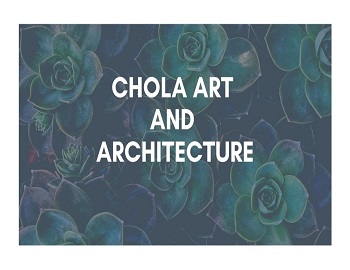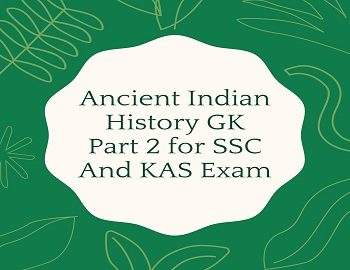Chola Art and Architecture:
The Cholas were great builders. They continued and developed the art tradition of the Pallavas and Pandyas, whom they succeeded and used their wealth in building long-lasting stone temples and exquisite bronze sculptures. The temple architecture, particularly the Dravida or south India style of temple building, reached the pinnacle of glory under the Cholas. During nearly the four centuries long rule of the Cholas, the entire Tamil country was studded with temples and the Chola art traditions were adopted and followed in Sri Lanka and other parts of South India.
The main features of Chola Architecture comprised:
- The gopuram or the gateway.
- The garbhagriha or the main shrine.
- The mandapa or the audience hall.
- The vimanas or the towers above the main shrine.
- The spacious courtyards.
The remarkable feature of the Chola temples was their huge towers or vimana. In the Brihadeswara or Rajarajesvara temple, built by Rajaraja I and dedicated to Lord Shiva, the vimana or tower is about 57 metres high upon a square, comprising thirteen successive storeys. It is crowned by a single block of granite, 7.5 metres high and about 80 tonnes in weight. Similarly, Rajendra I erected a splendid temple at his new capital. Gangaikonda Cholapuram. Some other temples made during this period include the Airavateswara Temple at Darasuram near Thanjavur built during the reign of Rajaraja Chola II and the Kampaharesvara Temple at Tribhuvanam near Kumbakonam built by Kulothunga Chola III. The Chola temples were the centre of social activities during this period. The temple received lavish donations. These temples also generated a lot of employment opportunities by employing people, who were involved in the day-to-day running of these places. The temple authorities also pursued many welfare activities, for example, the temples functioned as schools.
The Cholas also encouraged plastic art; the metal and stone images cast during the period are exquisitely executed and display a wonderful vigour, dignity and grace. The masterpiece of Chola sculpture is the famous Nataraja or the Dancing Shiva image at the great temple of Chidambaram. Numerous such images were also moulded in bronze. This Nataraja has been described as the “cultural epitome” of the Chola period.
The Cholas also patronized the art of painting. Of all the Chola paintings, the most important are those in the pradakshina passage of the Rajarajesvara Temple. The Chola wall paintings or frescoes are also to be found on the walls of the Vijayalaya Cholesvara Temple. It contains large painted figures of Mahakala, Devi and Shiva. In the Rajarajesvara Temple, scenes representing Lord Shiva in his abode of Kailash as Nataraja and tripurantaka are painted on the walls in large and forceful compositions.





![Muslim League [December 30, 1906] 6 Muslim League](https://gkscientist.com/wp-content/uploads/2021/05/Muslim-League.jpg)



Comments (No)